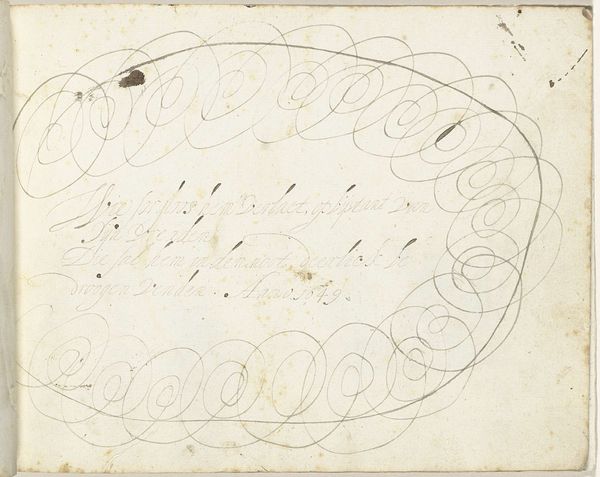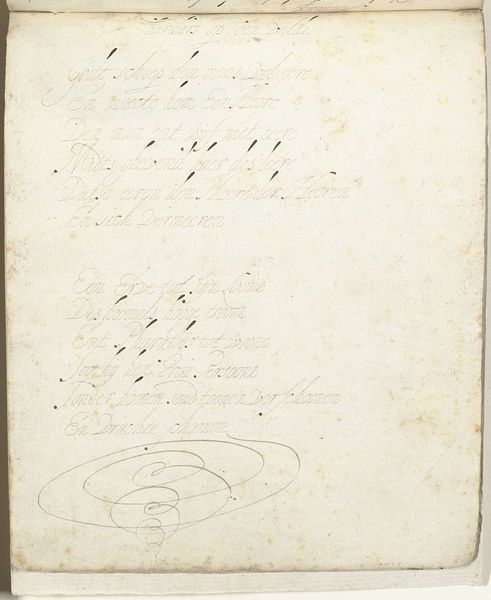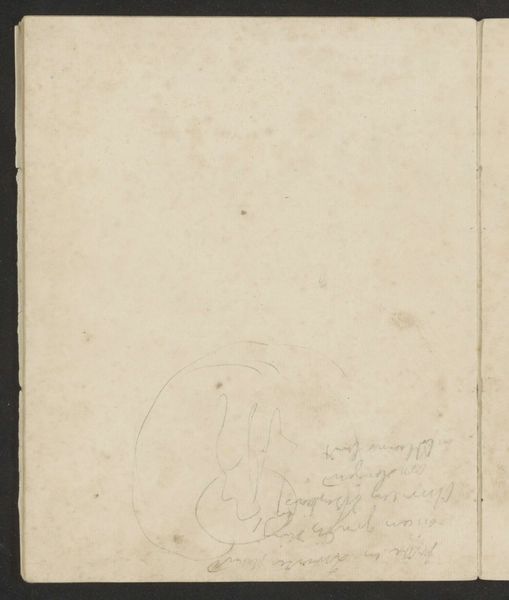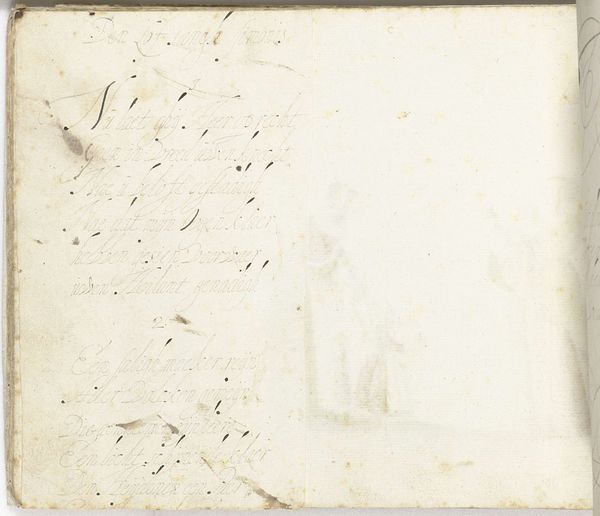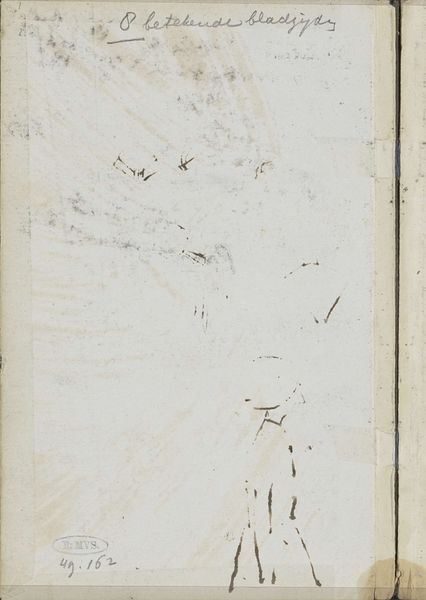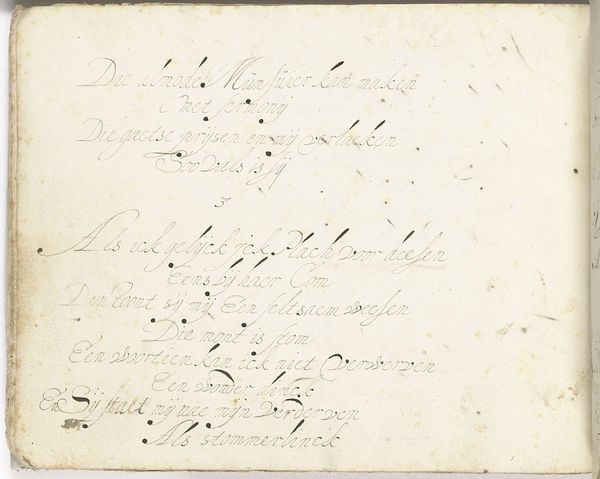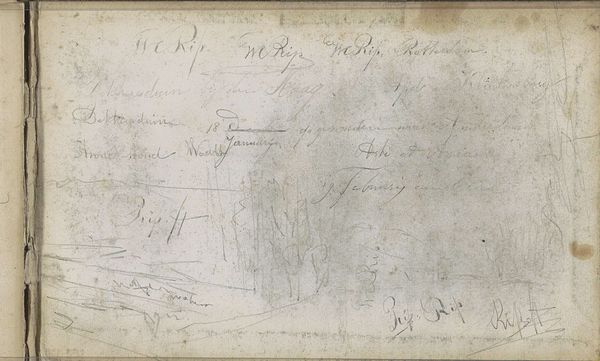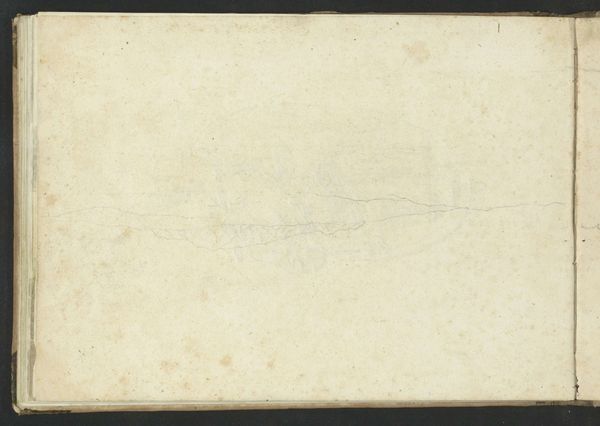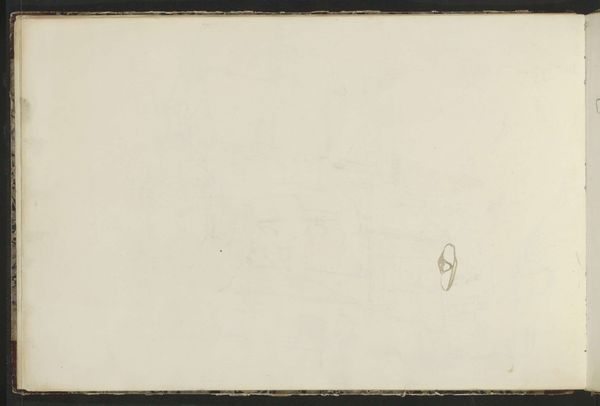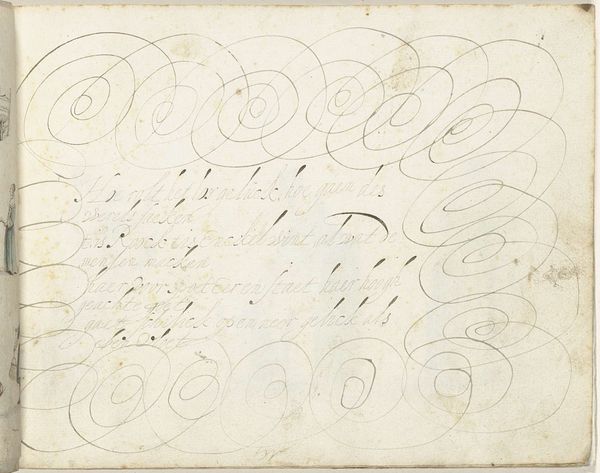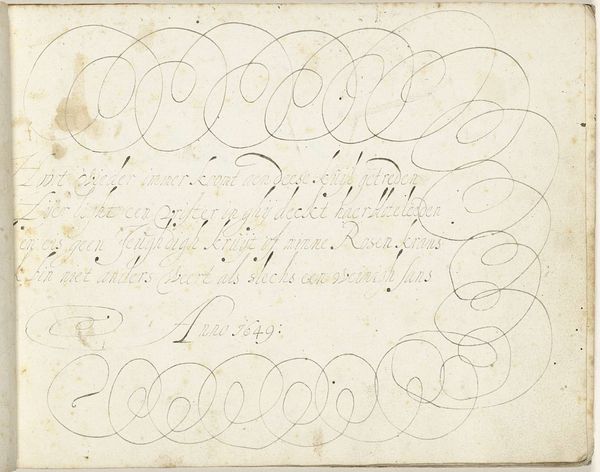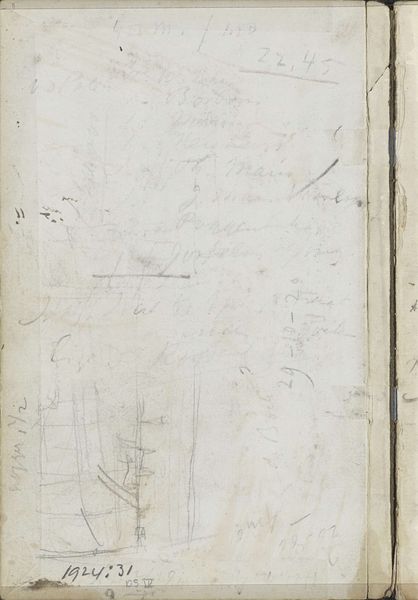
drawing, paper, ink
#
drawing
#
water colours
#
dutch-golden-age
#
paper
#
ink
#
coloured pencil
#
line
#
watercolor
#
calligraphy
#
monochrome
Dimensions: height 155 mm, width 211 mm
Copyright: Rijks Museum: Open Domain
Curator: This delicate piece, "Gedicht over de wisselvalligheid van de liefde (deel 4)" or "Poem on the vicissitudes of love (part 4)," dates back to around 1649 and is the work of Gesina ter Borch. It is part of the Rijksmuseum's collection, created using ink, watercolor and coloured pencil on paper. Editor: Wow, a tornado! Or a love vortex maybe? It sucks you in with that playful looping calligraphy, promising all sorts of drama, and then spits you right out, dizzy. It is all so raw, so exposed. It has the feel of a personal diary. Curator: The drawing's impact lies, in part, on ter Borch's exploration of love’s volatile nature within the social constructs of the Dutch Golden Age. As a woman artist, her perspective offers a unique counterpoint to the often idealized representations of love during this period, navigating the expectations and constraints placed upon women regarding marriage, relationships, and societal roles. Editor: It feels like she’s mapping emotional weather patterns – love coming in hot, then cooling off, all those highs and lows expressed with simple, elegant lines. The poem part? That looks like it's whispering secrets, too faded to quite decipher, only hinting. Curator: Ter Borch's integration of text and image creates a layered experience, suggesting love as both a feeling and a social construct, intertwined with language, societal expectations, and personal experience. Consider, for example, that Gesina never married. Editor: Oh, now it’s even more fascinating, because now I see not just drama but freedom. She swirls words and images in this intimate way, claiming authority over the chaos, and defining on her own terms what it is all supposed to be. Curator: Precisely. Viewing this work through a feminist lens encourages us to consider the artistic and social agency of women like Gesina ter Borch. Editor: It kind of makes me wanna grab my own notebook, spill my guts with ink, swirl it all up, and declare myself a free weather system. Thank you for that. Curator: Indeed. Hopefully it will cause one to ponder the dialogues between women’s lives, artmaking, and socio-cultural frameworks.
Comments
No comments
Be the first to comment and join the conversation on the ultimate creative platform.
